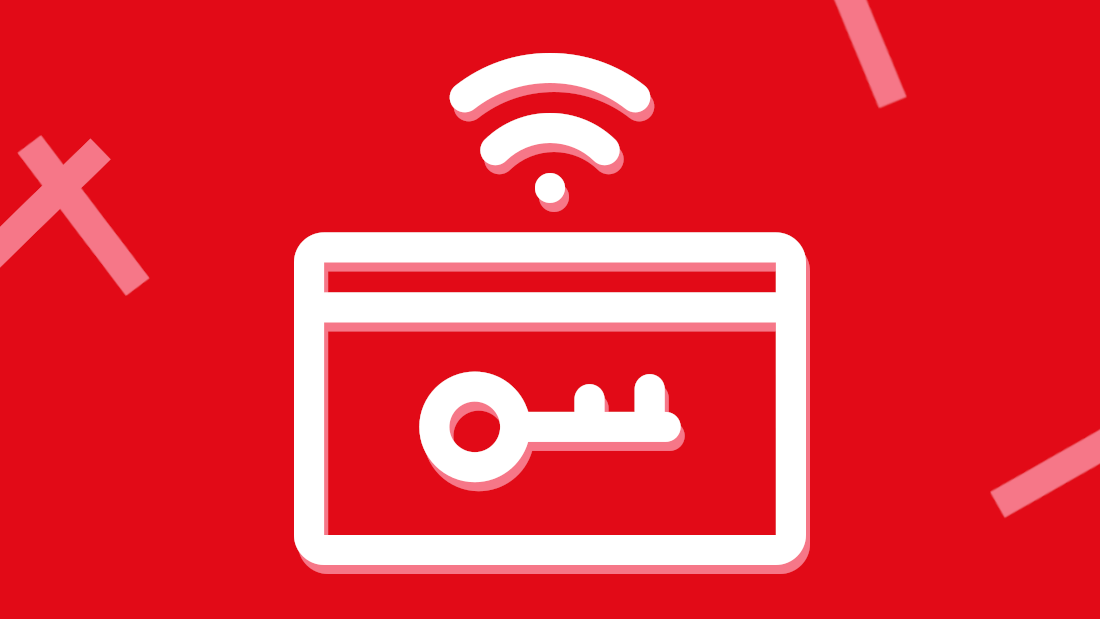If you want to stir up people’s emotions ask them to tell you about their worst hotel experiences. Everyone has a story – and passions run high.
We tested this at Sparck with a discussion on the internal messaging system, Slack, which eventually ran to almost a hundred responses.
From trivial irritations to serious accessibility problems, it’s clear that hotel services and environments are not always designed with the needs of users in mind.
In the past, I’ve described customer experience (CX) as the practice of engaging customers by showing them a good time. It sits somewhere between pure (or purist) user-centred design and marketing. It’s about how your product or service makes people feel.
In hospitality (the clue is in the name) that’s arguably more important than in any other context. A flurry of online reviews at less than 4 stars, or one disgruntled Instagram post from an influencer, can cause serious long-term damage.
There are understandable reasons why hotels might be getting this wrong, though, just as there in other sectors.
For example, running hotels profitably requires tight control of costs and margins. Read any interview with a hotel chain CEO and that’s a subject that always comes up. There’s simply no use delighting customers if doing so make the business unprofitable.
At the same time, many of the issues raised in the discussion at Sparck could be solved at relatively low cost, with the input of designers during the next round of relaunch and refurb.
There’s also an issue with priorities in hospitality. It was fascinating to read this perspective on how hotel operators commission buildings from Australian architecture firm Valé:
“That process usually kicks off with the business owner giving designers a brief of what’s expected, including a schedule of areas and other supporting information on how the building should operate. The brief may include information about the company’s branding requirements, but this is often limited to technical requirements only. Because of the lack of information around the end user experience, it’s mostly left up to the designer to interpret the business owner’s brand and how that end user is supposed to feel, think and act once they step into the building.... Often the designer will come up with three different designs ranging from traditional to safe bet, to super modern, or a variation of these titles. They’ll then commit to creating the one the client finds most pretty… instead of the one that’ll resonate most with their future customers wants and needs.”
That tension between aesthetics and usability manifests in all sorts of specific ways.
Let there be light
A number of people brought up light switches as a perennial problem in hotels.
Emma Baker, head of the Sparck content practice, flagged one pet hate:
“Light switches that aren't by the bed so you have to get up to turn them on or off.”
I’d also say that many hotels have lighting systems that aren’t intuitive. There’s often no obvious way to tell which switch will turn which light on or off, for example.
And sometimes, they’re hidden. I recently spent 15 minutes in a hotel room in Berlin trying to turn on a floor light in a dark corner, eventually finding a tiny black switch concealed about halfway up the black lamp stand.
Beyond artificial light, Sparck’s head of design Paul Bailey channelled his inner Peter Kay:
“Hotel rooms with no windows – what's all that about?”
Service designer Anne Dhir agrees, and suggests a small tweak to the guest onboarding process:
“If the room doesn't have a window, tell me in advance. It freaks me out! And, no, an internal window into a stairwell doesn’t count.”
For Miriam Vaswani, a content designer, the functioning of windows is often a problem, too:
“I hate both windows that don’t open and windows that don’t lock.”
Plug and play
Another common gripe was the lack of electrical sockets, their position, and the difficult in finding them.
Simon de Timary, head of data and AI at BJSS, chipped in with this observation:
“Sockets are often far away from bedside table, or all sockets by the bedside table are being used for the alarm clock and lamp.”
For user researcher Kirsty Ramsay-Hogan, it’s about the positioning of sockets:
“Why are they always hidden behind wardrobes and beds?”
My observation is that hotels have tried to respond to the need for charging points for smartphones and tablets but the speed of their refurb programmes are often way behind advances in technology.
Every hotel I’ve stayed in lately has USB charging sockets… but they’re not compatible with the now ubiquitous USB C charging cables.
Non-standard interfaces
In a 2017 article for the Financial Times Michael Skapinker asked a great question: “Why are hotel showers so unfathomable?” He describes a particularly puzzling shower in a hotel room in Vienna:
“It is one where you run the bath water over your feet until you get the temperature right. Then you press down, or lift up the plunger, or perhaps rotate a wheel, and the shower takes over from the bath. Except I cannot find the plunger or the wheel. It is not between the bath taps. It is not on the wall between the bath and the shower. It is not attached to the shower head. I give up and decide to have a bath. Turning the bath tap that little bit more releases a storm from the shower. That is how you work this shower. You overdo the bath.”
Having read that article at the time, I now notice this problem everywhere I go.
Plugs that you push in. Plugs that you operate with a hidden lever. Plugs that you operate with a dial. Automatic taps. Taps you twist, press, pull…
Skapinker suggests a simple solution to this problem: either provide instructions, or make your bathroom facilities work in the same way as those we’re used to in the real world.
In the Slack chat at Sparck, people also raised the issue of TVs with custom interfaces you have to navigate with the remote. But why do they always seem to be unresponsive, or even broken?
Air conditioning poses similar problems. How do you stop it making noises and blinking at you during the night?
Personal safety
The above is all petty stuff compared to the very real concerns expressed by women at Sparck who have been made to feel unsafe by the ways hotels deliver their services.
User researcher Annika Leick raised the issue of basic room security:
“Doors that don't lock properly don’t give you a great feeling as a female solo traveller.”
Amy Middleton, a service designer, said:
“It really annoys me when I’m travelling alone and the receptionist shouts ‘OK, YOUR ROOM IS 102!’ in front of the entire queue, so everyone knows where you’re staying.”
On the flipside, content designer Naomi Busuttil had a positive story to share:
“I recently stayed alone at a Premier Inn and when I checked in the person on reception explained that my room number was written on the key card and passed it to me face down. I liked that they didn't highlight I was alone and kept my room number private. It made me feel safer.”
Back to the question of costs and margins, how much does the above cost to implement? Nothing, barring some staff training, once you’ve done the research into what your users need.
Accessible facilities
One area where it’s especially clear that hotels have not always prioritised user needs is accessibility.
User researcher Laura Musgrave highlighted several common accessibility problems in hotels:
- Door handles not at a height someone using a wheelchair or scooter can reach.
- Heavy doors, especially one after the other, without (working) electric controls.
- Poorly designed room entrances without proper space to enter on wheels.
- No level access in or out of the building.
Magdalena Kowal, also a user researcher, has experience of hotels with no elevators which didn’t advertise this fact beforehand:
“Some people may have trouble getting to their room, such as those with heart conditions, or who can’t use the stairs because they’re on wheels.”
Flashpoint: reception and check-in
I could keep going almost forever but one final area of tension is the welcome guests receive at the front desk.
I’ve personally experienced the frustration of long, complicated check-in procedures when I’m exhausted from travelling, carrying a heavy rucksack, and need the toilet.
Instead of grabbing a key and heading to my room, I’m given a detailed briefing on breakfast and door controls, while filling in forms that duplicate information from my original booking.
Miriam also mentioned another problem that often occurs at check-in:
“When the hotel asks for a stupidly large security deposit. I was at an airport hotel recently that wanted £300. Not everyone can afford that, and in some parts of the world it’s unusual or impossible to have a credit card.”
There’s potential here to make a great impression on guests, rather than frustrating them. Imogen Ffoulkes, a service designer, shared this story:
“I stayed in a hotel in York and they asked during check us if we were visiting for anything special. It was for my partner’s birthday so we mentioned that and then went off to our room. Ten minutes later, someone knocked on our door and said we were welcome to get a free celebratory drink at any point during our stay, and provided a wine cooler as they noticed we had a bottle with us. It was a lovely touch to show they’d listened and wanted to make the stay memorable.”
Hotel guests as service users
There’s evidence that some hotel chains are applying principles of human-centred design.
On that point above about the pain of check-in, for example, Hilton Hotels has a digital key option through its smartphone app.
This allows guests to check in online, choose their room, and unlock the door with their phone. This means they can skip reception altogether. Hilton argues that this also improves accessibility, doing away with fiddly keys and keycards.
My colleague Kerrie Hughes, a customer experience expert, says:
“Ritz Carlton is considered best in class by many CX professionals. Their services offer is driven by the CX mindset. Clearly, it’s a luxury brand and therefore has deep pockets but, nevertheless, many in the industry look to it for inspiration on how to drive a customer obsessed culture.”
She recommends this article by Catherine Morin for those who want to learn more.
At the other end of the price scale, Anne Dhir, who works with Kerrie on CX projects at Sparck, highlights UK chain Premier Inn:
“I heard Sophie Dennis talk about this at UX Scotland in 2019. She told the story of how they conducted customer experience research on what mattered most to their customers. It turned out to be utterly obvious: a good night’s sleep.”
“This was part of a very successful transformation,” adds Kerrie. “It was driven by user need, from a CX perspective. As a result, comfy beds became the top focus, and are still the core of their marketing today.”
“There’s also a point around expectations,” says Anne. “In a luxury hotel, Premier Inn facilities would be a disappointment. But when the bill is low, little extras you don’t expect are delightful.”
But, really, there ought to be hundreds of such case studies.
The hotel industry should be at the forefront of user-centred, or human-centred, design – because human happiness is its core business.
A human-centred eye on your hotel business
Would your hotel or chain benefit from expert input from the Sparck team? From user research to the design of products and user journeys, we could be just what you need to step up in the market.
Contact us online or connect with the always approachable Terry Dixon to find out more.
And, in the meantime, check out this case study of how we overhauled a hotel room booking system for ITV.



